I'll never forget the towering puno ng saging in our backyard that my Lola treasured like gold. Every time a banana heart was ready for harvest, she'd send me to carefully cut it down, and my mouth would water knowing what was coming next: her famous Ginataang Puso ng Saging.
The way the tender banana heart soaks up the rich gata, how the pork belly adds just the right amount of indulgence, and that gentle kick from the siling labuyo - it's exactly what Filipino comfort food should be.
If you've got access to puso ng saging (or even the canned version), trust me, you need to try this recipe.
Jump to:
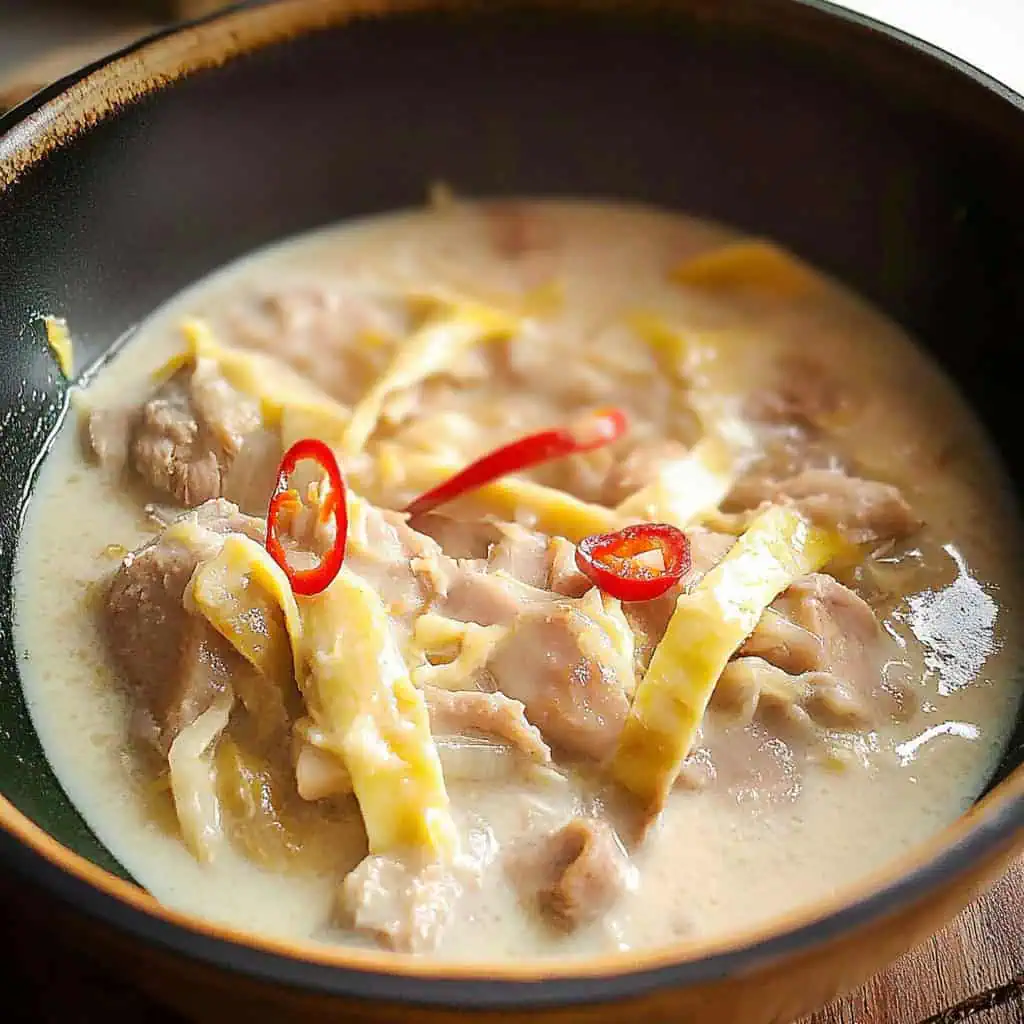
Why You'll Love This Recipe
- Rich, creamy coconut sauce that perfectly balances the banana heart's unique texture
- Budget-friendly yet impressive dish that feeds a crowd
- Versatile recipe that works as both a main dish or side
- Authentic Filipino flavors with a perfect balance of savory and spicy notes
- Zero-waste cooking – uses parts of the banana tree typically discarded
- Packed with nutrients and fiber
Ingredients
This recipe brings together traditional Filipino ingredients that create perfect harmony. The banana heart offers a unique, slightly artichoke-like flavor and absorbs the rich coconut milk beautifully. Pork belly adds savory depth and satisfying richness without overpowering the delicate banana heart.
Coconut milk creates the creamy base that defines ginataan dishes, while fish sauce provides that essential umami foundation. Garlic and onions build the aromatic base, and Thai chilies add a gentle heat that balances the creaminess.
Together, these ingredients represent Filipino culinary wisdom - transforming an often-overlooked part of the banana tree into a memorable dish that's both economical and deeply flavorful.
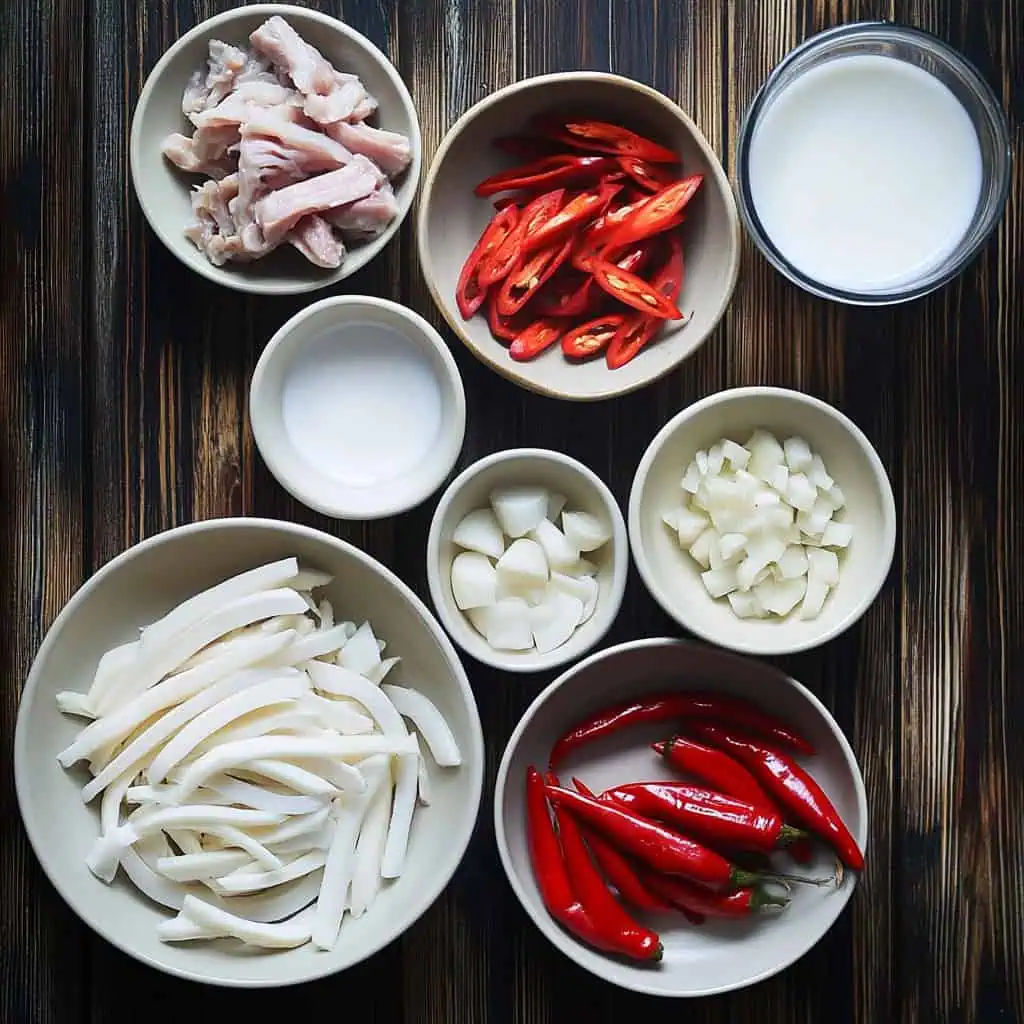
For the Main Dish:
- 2 large banana hearts (puso ng saging) - about 4 pounds
- ½ pound pork belly (liempo), diced
- 1 can (13.5 oz) coconut milk (gata)
- 1 medium onion, chopped
- 3 cloves garlic, minced
- 2 Thai chili peppers (siling labuyo), optional
- 1 tablespoon fish sauce (patis)
- Salt and pepper to taste
For Preparation:
- 2 tablespoons rock salt
- 1 tablespoon cooking oil
Equipment
- Large sharp knife (panghiwa) - Essential for trimming and slicing the banana heart precisely
- Heavy-bottom pan or kawali - Ensures even heat distribution to prevent coconut milk from curdling
- Wooden spoon (sandok) - For gentle stirring without breaking the delicate banana heart slices
- Large mixing bowl - Used for salting the banana heart to remove bitterness
- Colander (salaan) - For washing and draining the banana heart thoroughly
- Measuring cups and spoons (Panukat) - Ensures accurate measurements for consistent results
- Cutting board (Sangkalan) - Provides a sturdy surface for preparation work
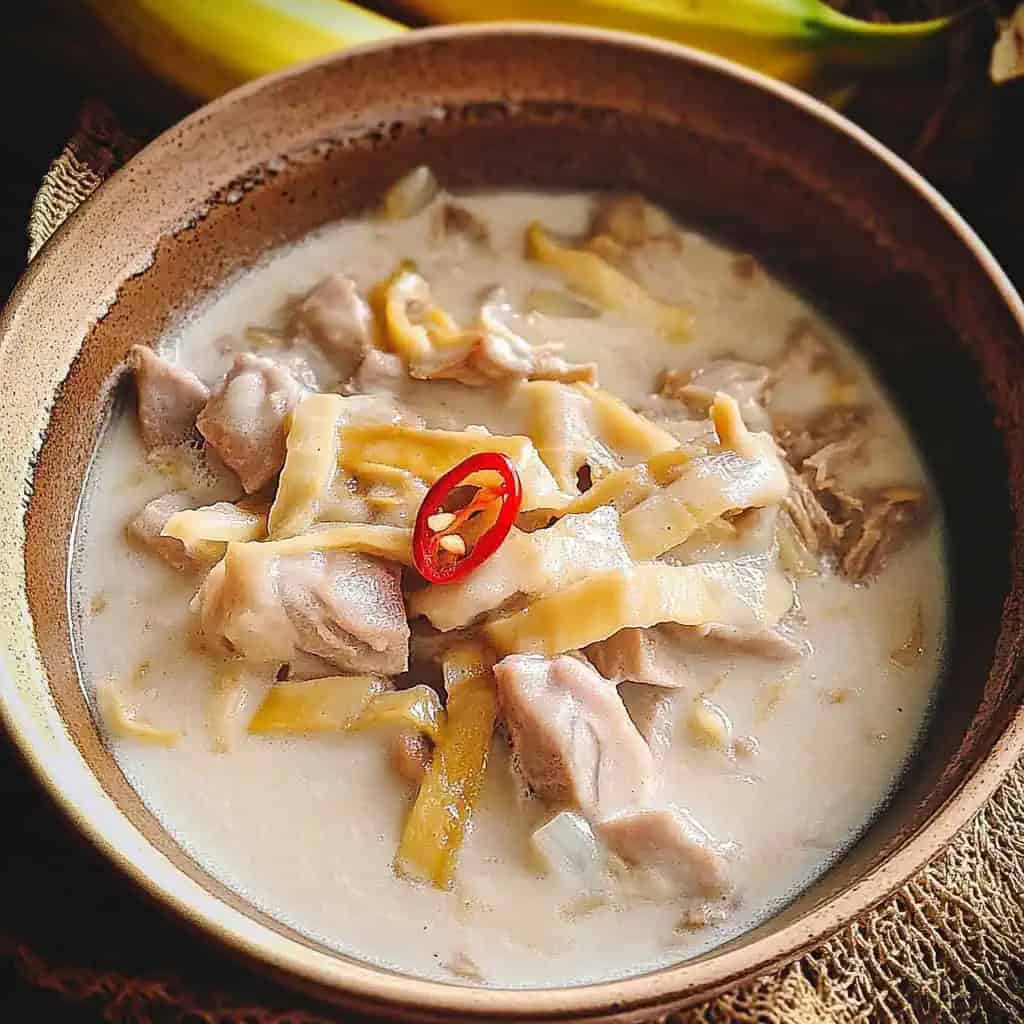
How To Make
- First, prepare your banana heart by peeling off all the dark purple outer layers until you reach the pale white core. Cut off the stem, then slice the heart in half lengthwise. Slice each half into very thin pieces, about as thick as a peso coin. Put all the sliced banana heart in a large bowl and mix with 2 tablespoons of rock salt. Let this sit for 15 minutes. After 15 minutes, squeeze the banana heart firmly with your hands to remove the bitter liquid, then rinse well with cold water until the water runs clear.
- Heat your pan over medium heat and add oil. Once hot, cook your chopped onions until they turn clear, about 2-3 minutes. Add your minced garlic and cook just until you can smell its aroma, about 30 seconds. Add your diced pork belly and cook until the meat turns light brown, stirring occasionally, about 5-7 minutes.
- Add fish sauce and stir everything for one minute. Now add your prepared banana heart and stir to mix well with the pork. Pour in your coconut milk and add the chili peppers if you're using them. Lower the heat to the lowest setting - this is very important so your coconut milk won't separate.
- Cover your pan and let everything cook gently for 15-20 minutes, stirring every few minutes to make sure nothing sticks to the bottom. Your dish is ready when the banana heart is tender when pierced with a fork, but still has a slight bite to it, and the sauce has become creamy and slightly thick. Taste the sauce and add salt and pepper if needed. The sauce should be rich and creamy, perfect for pouring over hot rice. Serve while hot.
Remember: If your sauce starts to separate or look grainy, your heat is too high. Keep it at a very gentle simmer throughout the cooking process. Your patience will be rewarded with a perfectly creamy sauce.

Tips from Lola's Kitchen
- Select the Perfect Banana Heart: Choose ones that feel heavy for their size - this indicates freshness and juiciness. The outer purple leaves should be tight and free of brown spots.
- Prevent Browning: Keep prepared banana heart submerged in cold water with a squeeze of lemon juice until ready to cook.
- Master the Coconut Milk: Never let coconut milk reach a rolling boil - a gentle simmer is key to preventing separation. Watch carefully and reduce heat at the first sign of bubbling.
- Enhance Creaminess: For special occasions, add 2-3 tablespoons of coconut cream (kakang gata) during the last 5 minutes of cooking for extra richness.
- Balance Flavors: If using canned banana heart, reduce the salt slightly as it may already contain sodium. Taste before adding additional seasonings.
- Achieve Perfect Texture: The banana heart should maintain a slight bite - overcooking will make it mushy and lose its distinctive texture.
- Traditional Finishing Touch: For authentic flavor, drizzle with a few drops of freshly squeezed kalamansi juice just before serving.
Substitutions
- Pork Belly → Shrimp, smoked fish (tinapa), or tofu - For seafood version, add shrimp only in the last 5 minutes to prevent overcooking. For vegetarian option, firm tofu works wonderfully after being lightly fried.
- Fresh Coconut Milk → Canned coconut milk - Use full-fat, premium canned coconut milk for best results. Shake well before opening.
- Thai Chilies → Bird's eye chilies or black pepper - Adjust heat level to your preference. For a milder dish, use just one chili or substitute with a gentle sprinkle of black pepper.
- Fish Sauce → Salt or soy sauce - While fish sauce provides authentic flavor, soy sauce makes a good alternative with a different but pleasant umami profile.
- Fresh Banana Heart → Canned banana heart - Drain and rinse canned banana heart thoroughly before using. Skip the salting step as canned versions are pre-processed.
Troubleshooting
- Sauce Too Watery? Simmer uncovered for 5-10 additional minutes to reduce liquid, stirring occasionally.
- Bitter Taste? The banana heart wasn't properly salted or rinsed. Next time, extend the salting period to 20 minutes and rinse more thoroughly. For immediate fix, add a teaspoon of sugar to balance flavors.
- Sauce Separating? Heat was too high. Immediately reduce temperature and gently stir to re-emulsify. Avoid vigorous stirring which can worsen separation.
- Tough Banana Heart? Continue cooking on low heat for 5-10 more minutes. Add a splash of water if needed to prevent drying out.
- Too Salty? Add a splash of coconut cream or a small amount of cooked, unsalted rice to absorb excess salt. Alternatively, prepare a small batch without salt and mix in.
Storage & Reheating
- Refrigeration: Store leftovers in an airtight container for up to 3 days. The flavors often deepen overnight, making it even more delicious the next day.
- Not Freezer-Friendly: Freezing is not recommended as coconut milk tends to separate and the banana heart texture deteriorates when thawed.
- Stovetop Reheating: The best method is gentle reheating on the stovetop over low heat with a splash of water or coconut milk to revive the sauce. Stir occasionally until warmed through.
- Microwave Method: If using a microwave, use 50% power and heat in 30-second intervals, stirring between each until warmed through. This prevents the coconut milk from overheating.
- Freshness Matters: For optimal flavor and food safety, consume within 24 hours of refrigeration.
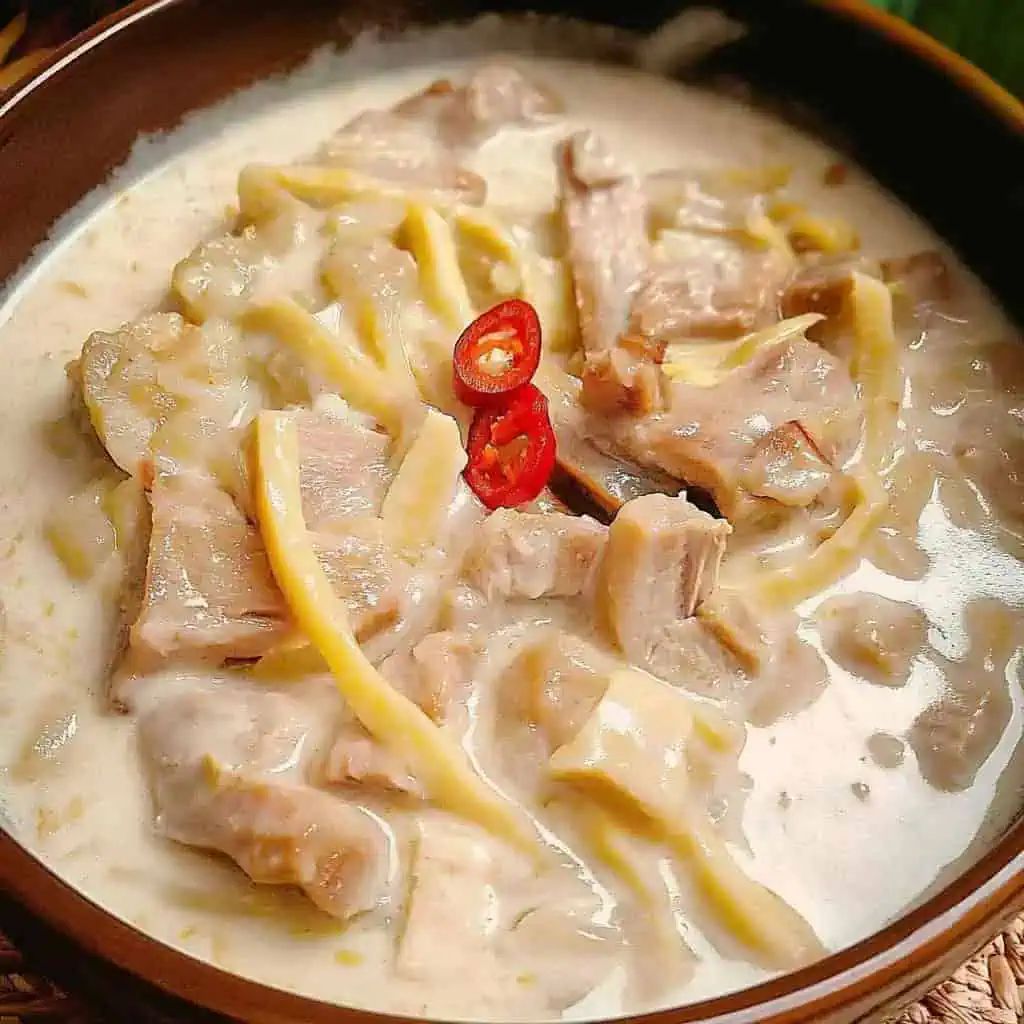
FAQ
Can I prepare banana heart in advance?
Yes, you can prepare it up to 12 hours ahead. After slicing and salting, store it in cold water with a tablespoon of vinegar or lemon juice to prevent browning. Drain well before cooking.
Why is my banana heart bitter?
Bitterness comes from insufficient salting or rinsing. The salting process draws out the bitter sap naturally present in banana hearts. Next time, use more salt and let it sit longer before rinsing thoroughly.
How do I know when the dish is done?
The banana heart should be tender when pierced with a fork but still maintain a slight bite - similar to al dente pasta. The sauce should coat the back of a spoon but not be too thick.
Can I make this dish ahead for a party?
Yes, but it's best prepared just a few hours before serving. The flavors develop nicely after a short rest, but the texture is best when relatively fresh.
Is this dish healthy?
While containing coconut milk and pork belly, this dish is quite nutritious. Banana hearts are high in fiber, potassium, and various vitamins. For a healthier version, use lean pork or substitute with tofu and reduce the amount of coconut milk.
What's the best way to select a banana heart at the market?
Look for firm banana hearts with tightly packed, fresh-looking purple outer leaves. Avoid those with brown spots or signs of drying out. The heart should feel heavy for its size, indicating juiciness.
Can children eat this dish?
Absolutely! For young children, you might want to reduce or omit the chilies. The mild, slightly sweet flavor of the banana heart combined with creamy coconut sauce is often appealing to children.
Related
Looking for other recipes like this? Try these:
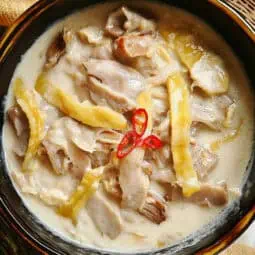
Ginataang Puso ng Saging (Creamy Coconut Banana Heart Stew)
Equipment
- Large sharp knife (panghiwa) for preparing the banana heart
- Heavy-bottom pan or kawali ensures even heat distribution
- Wooden spoon (sandok) for gentle stirring without breaking ingredients
- Large mixing bowl for salting the banana heart
- Colander (salaan) for washing and draining
- Measuring cups and spoons (Panukat) for accurate measurements of ingredients
- Cutting board (Sangkalan)
Ingredients
For the Main Dish:
- 2 large banana hearts puso ng saging - about 4 pounds
- ½ pound pork belly liempo, diced
- 1 can 13.5 oz coconut milk (gata)
- 1 medium onion sibuyas, chopped
- 3 cloves garlic bawang, minced
- 2 Thai chili peppers siling labuyo, optional
- 1 tablespoon fish sauce patis
- Salt asin and pepper (paminta) to taste
For Preparation:
- 2 tablespoons rock salt asin
- 1 tablespoon cooking oil
Instructions
- First, prepare your banana heart by peeling off all the dark purple outer layers until you reach the pale white core. Cut off the stem, then slice the heart in half lengthwise. Slice each half into very thin pieces, about as thick as a peso coin. Put all the sliced banana heart in a large bowl and mix with 2 tablespoons of rock salt. Let this sit for 15 minutes. After 15 minutes, squeeze the banana heart firmly with your hands to remove the bitter liquid, then rinse well with cold water until the water runs clear.
- Heat your pan over medium heat and add oil. Once hot, cook your chopped onions until they turn clear, about 2-3 minutes. Add your minced garlic and cook just until you can smell its aroma, about 30 seconds. Add your diced pork belly and cook until the meat turns light brown, stirring occasionally, about 5-7 minutes.
- Add fish sauce and stir everything for one minute. Now add your prepared banana heart and stir to mix well with the pork. Pour in your coconut milk and add the chili peppers if you're using them. Lower the heat to the lowest setting - this is very important so your coconut milk won't separate.
- Cover your pan and let everything cook gently for 15-20 minutes, stirring every few minutes to make sure nothing sticks to the bottom. Your dish is ready when the banana heart is tender when pierced with a fork, but still has a slight bite to it, and the sauce has become creamy and slightly thick. Taste the sauce and add salt and pepper if needed. The sauce should be rich and creamy, perfect for pouring over hot rice. Serve while hot.
- Remember: If your sauce starts to separate or look grainy, your heat is too high. Keep it at a very gentle simmer throughout the cooking process. Your patience will be rewarded with a perfectly creamy sauce.
Tips from Lola's Kitchen
- Choose banana hearts that feel heavy for their size
- Look for tight, purple outer leaves without brown spots
- Keep prepared banana heart in cold water to prevent browning
- Never boil coconut milk - gentle simmer only to prevent curdling
- Add coconut cream (kakang gata) at the end for extra richness
- For best results, use native coconut milk (gata ng niyog)
Nutrition
The Story Behind Ginataang Puso ng Saging
Like many beloved Filipino dishes, Ginataang Puso ng Saging emerged from our culture's deep-rooted philosophy of not letting anything go to waste. In the Philippines, where banana trees grow abundantly in backyards and small farms, our ancestors discovered that the heart of the banana plant – often discarded after harvesting bananas – could be transformed into a delectable dish that would later become a staple in Filipino households.
This humble recipe tells the story of Filipino ingenuity and resourcefulness, particularly during times when food had to be stretched and every part of a plant utilized. The banana heart, known locally as puso ng saging, was discovered to have a tender, artichoke-like texture that perfectly absorbs the rich flavors of coconut milk (gata) – a cornerstone ingredient in Filipino cooking that reflects our archipelago's abundant coconut trees.
In rural communities, especially in the Visayas and Bicol regions where coconut milk features prominently in local cuisine, Ginataang Puso ng Saging became a practical way to create a filling meal from readily available ingredients. The addition of pork belly (liempo) came later, as families looked to add more substance and flavor to the dish, though some coastal areas prefer to use fresh shrimp or smoked fish instead.
Today, this dish represents more than just sustenance – it's a celebration of Filipino culinary heritage and sustainable cooking practices. While modern Filipino families might not have banana trees in their backyards anymore, the tradition of cooking Ginataang Puso ng Saging continues, passed down through generations as both a practical cooking lesson and a reminder of our agricultural roots. As global conversations about sustainability and zero-waste cooking gain momentum, this traditional Filipino recipe stands as a testament to how our ancestors were ahead of their time, turning what others might consider waste into a dish worthy of any Filipino family table.
What makes this recipe particularly special is its adaptability across different regions of the Philippines. From the spicier versions in Bicol to the more coconut-cream heavy variations in Southern Luzon, each region has embraced and adapted this dish while maintaining its essence – a creamy, comforting celebration of Filipino culinary wisdom.
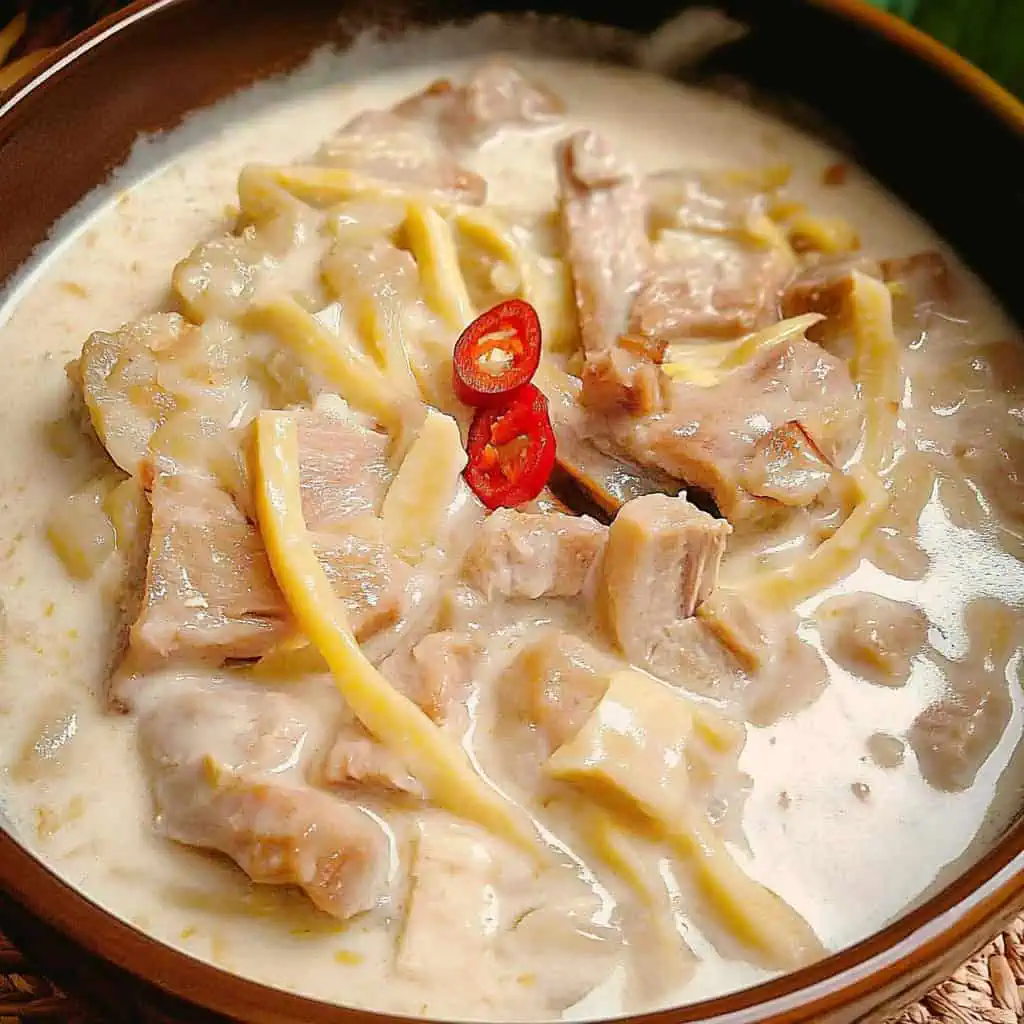





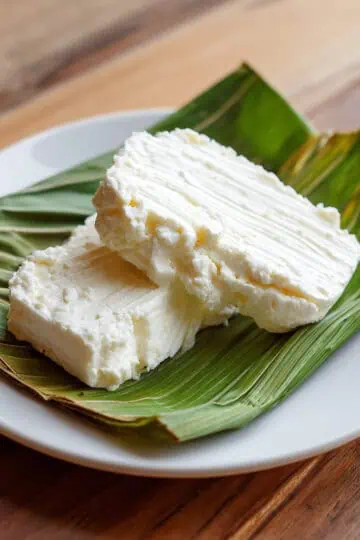
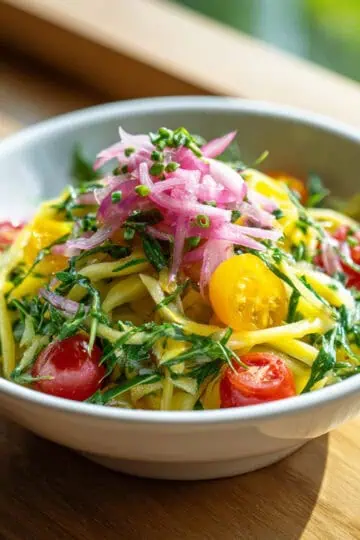
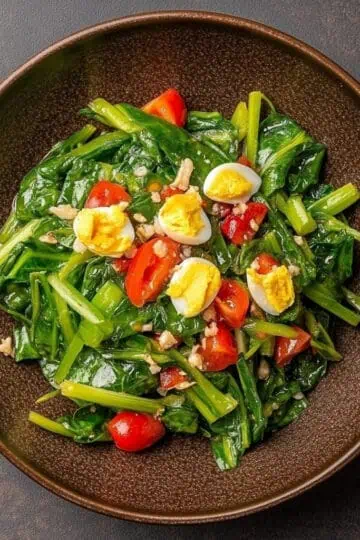

Comments
No Comments